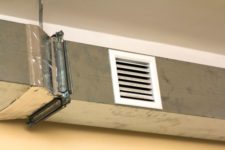Blog
5 Warning Signs Your Air Ducts Need to be Replaced
An inefficient or malfunctioning HVAC system is cause for concern, but the problem may not be with the furnace. It could be with the air ducts. Ductwork is an important component of the total heating system and as such, requires some attention. Leaks in the ductwork can result in the equipment working harder to maintain the same comfort level. This results in higher energy costs and also increases the chance of breakdowns requiring repair or replacement of not only the ductwork, but the system itself.
How Your Air Ducts Work
A typical home heating system uses air ducts to bring in fresh air and then transport the heated air throughout the home. Air is drawn into the system through return ducts and is pumped into the various rooms in the home through supply ducts.
Signs of Bad Ductwork
1. Air duct leaks
Leaks can come from holes or cracks in the ducts, or from improper installation that leaves gaps. EnergyStar reports that up to 20% of air moving through the ductwork is lost to leaks and never makes it into the living spaces of the home. This not only means heated or cooled air is wasted, but negative air pressure can suck dirt and dust into the ducts and carry it throughout the home, compromising indoor air quality.
2. Hot and cold spots
Inconsistent room temperatures or problem areas of the home that are difficult to heat or cool can result from leaks in the air ducts, improperly sized ductwork, or ducts that are kinked or sagging. Undersized ductwork restricts airflow making it difficult to maintain the proper temperature.
3. Low air quality.
Poorly sealed air ducts can pull in outside air, or harmful fumes from chemicals stored in your home such as paint thinner, pesticides or fertilizer.
4. High energy bills.
Damaged or poorly installed ductwork requires your HVAC equipment to work harder and run longer in order to achieve the desired comfort level. This translates into higher than necessary energy costs.
5. Excessive dust.
All homes have some dust, but excessive dust could be coming in through compromised air ducts.
What You Can Do
Follow these tips to troubleshoot problems with your HVAC system.
- Clean / replace your air filter.
Replacing the air filter is a simple, inexpensive way to keep dust, dirt and debris out of your HVAC equipment and out of your home. The air filter should be replaced every 30-60 days. - Make sure you have a minimum 2-foot clearance around the outdoor condenser unit.
Prevent debris from clogging the outside unit of your air conditioner by ensuring there is adequate clear space around it. Keep the area free of branches, leaves and other things that can block the airflow and damage the equipment. - Keep vents and registers open and unobstructed.
Periodically check the vents and registers to make sure they are open and unblocked. Vacuum the vents to get rid of dust and dirt that has collected inside.
If This Doesn’t Help, Call a Professional
Annual professional heating and air conditioning maintenance is the best way to protect the investment in your system and keep your home comfortable and energy-efficient all year long.
Indoor Air Quality is here to assist with all your HVAC needs. Contact us today! We serve homes in Highlands Ranch and throughout the Denver Metro Area.






